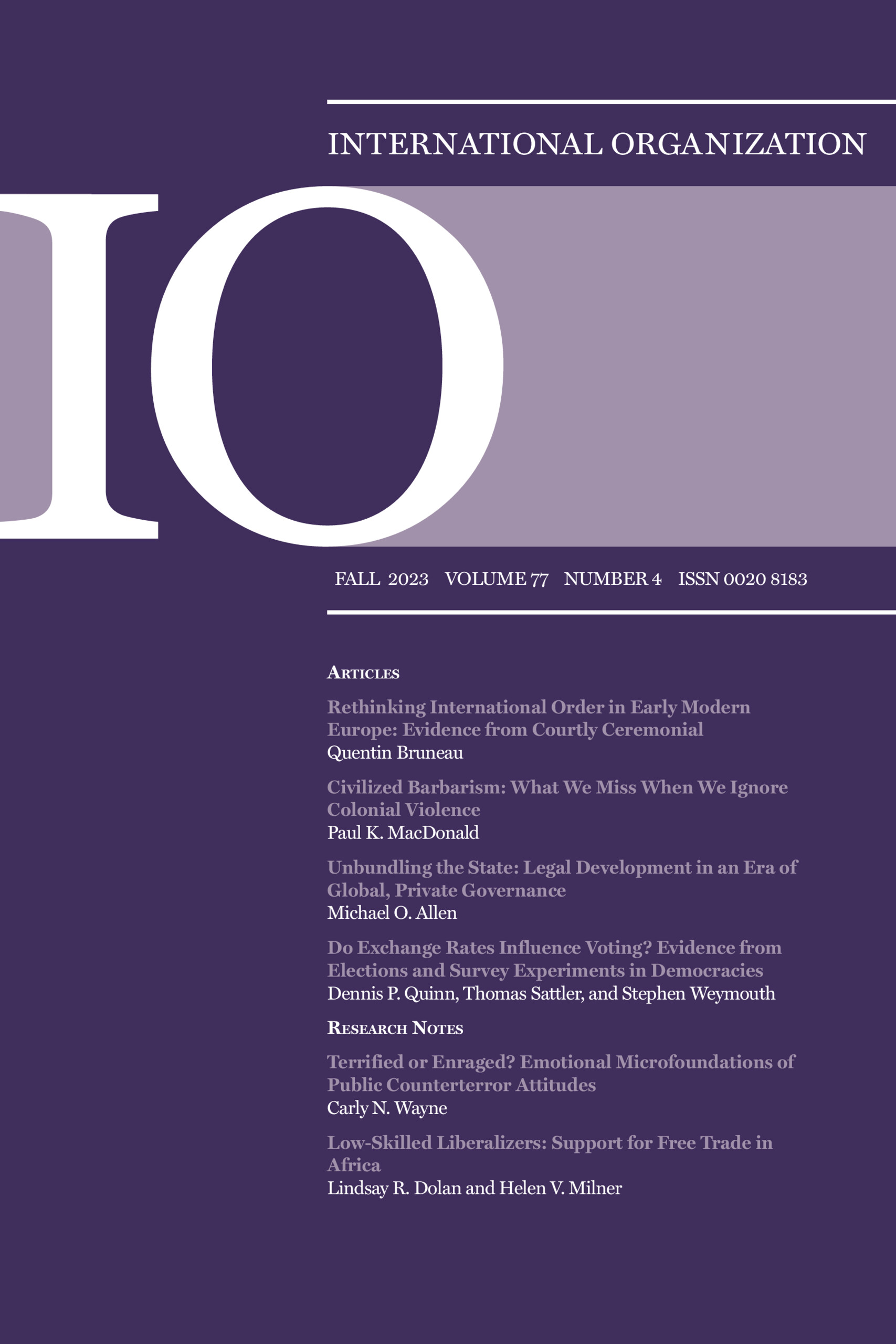Dual Use Deception: How Technology Shapes Cooperation in International Relations
IF 4.5
1区 社会学
Q1 INTERNATIONAL RELATIONS
引用次数: 1
Abstract
Abstract Almost all technology is dual use to some degree: it has both civilian and military applications. This feature creates a dilemma for cooperation. States can design arms control institutions to curtail costly competition over some military technology. But they also do not want to limit valuable civilian uses. How does the dual use nature of technology shape the prospects for cooperation? We argue that the duality of technology presents a challenge not by its very existence but rather through the ways it alters information constraints on the design of arms control institutions. We characterize variation in technology along two dual use dimensions: (1) the ease of distinguishing military from civilian uses; and (2) the degree of integration within military enterprises and the civilian economy. Distinguishability drives the level of monitoring needed to detect violations. When a weapon is indistinguishable from its civilian counterpart, states must improve detection though intelligence collection or intrusive inspections. Integration sharpens the costs of disclosing information to another state. For highly integrated technology, demonstrating compliance could expose information about other capabilities, increasing the security risks from espionage. Together, these dimensions generate expectations about the specific information problems states face as they try to devise agreements over various technologies. We introduce a new qualitative data set to assess both variables and their impact on cooperation across all modern armament technologies. The findings lend strong support for the theory. Efforts to control emerging technologies should consider how variation in the dual use attributes shapes this tension between detection and disclosure.双重用途欺骗:技术如何影响国际关系中的合作
几乎所有的技术在某种程度上都有双重用途:它既有民用用途,也有军事用途。这一特性给合作带来了困境。各国可以设计军备控制机构,以遏制在某些军事技术上代价高昂的竞争。但他们也不想限制有价值的民用用途。技术的双重用途如何影响合作前景?我们认为,技术的两重性之所以构成挑战,不是因为它本身的存在,而是因为它改变了对军备控制机构设计的信息限制的方式。我们沿着两个双重用途维度来描述技术的变化:(1)区分军用和民用的便利性;(2)军工企业内部与民用经济的融合程度。可区分性决定了检测违规所需的监控级别。当一种武器与民用武器无法区分时,国家必须通过情报收集或侵入性检查来改进探测。整合提高了向另一个国家披露信息的成本。对于高度集成的技术,展示遵从性可能会暴露有关其他功能的信息,从而增加来自间谍活动的安全风险。总之,这些维度产生了对国家在试图设计各种技术协议时所面临的特定信息问题的期望。我们引入了一个新的定性数据集来评估这两个变量及其对所有现代军备技术合作的影响。这些发现有力地支持了这一理论。控制新兴技术的努力应考虑双重用途属性的变化如何形成检测和披露之间的紧张关系。
本文章由计算机程序翻译,如有差异,请以英文原文为准。
求助全文
约1分钟内获得全文
求助全文
来源期刊

International Organization
Multiple-
CiteScore
14.50
自引率
1.30%
发文量
25
期刊介绍:
International Organization (IO) is a prominent peer-reviewed journal that comprehensively covers the field of international affairs. Its subject areas encompass foreign policies, international relations, political economy, security policies, environmental disputes, regional integration, alliance patterns, conflict resolution, economic development, and international capital movements. Continuously ranked among the top journals in the field, IO does not publish book reviews but instead features high-quality review essays that survey new developments, synthesize important ideas, and address key issues for future scholarship.
 求助内容:
求助内容: 应助结果提醒方式:
应助结果提醒方式:


